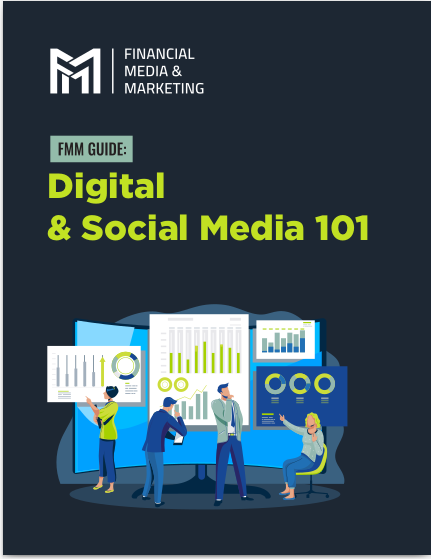Key Takeaways:
-
Your email newsletter should deliver real value, not just promotions, to keep readers engaged and build trust.
-
A strategic mix of personalization, timely insights, and actionable advice will help convert subscribers into loyal clients.
Why Most Financial Advisors’ Newsletters Go Unread (And How to Fix It)
You’ve probably spent hours crafting a financial newsletter only to get crickets in response. No replies, no clicks—just silence. The problem? Most financial newsletters are dull, overly technical, or filled with self-promotion. If you want to capture attention and turn subscribers into clients, you need to make every email count. Let’s break down how to do that.
The Email Newsletter Strategy You Need in 2025
Email marketing isn’t dead, but the approach you used a few years ago won’t cut it now. In 2025, inboxes are more cluttered than ever, and attention spans are shorter. Your newsletter must be:
-
Value-driven – Every email should provide information your audience can use immediately.
-
Concise – Busy professionals don’t have time for walls of text.
-
Personalized – Generic emails won’t engage readers.
-
Visually appealing – A clean design makes it easier to read and digest.
Crafting Subject Lines That Get Your Emails Opened
The subject line is your first impression. If it doesn’t grab attention, your email goes straight to the trash. To increase your open rate, follow these tips:
-
Use curiosity and urgency – “3 Financial Mistakes You Can’t Afford to Make This Year”
-
Make it personal – Including the recipient’s name boosts engagement.
-
Keep it short – 50 characters or fewer is ideal for mobile users.
-
Test different approaches – A/B testing helps you find what works best.
Avoid the Biggest Content Mistake: Talking Too Much About Yourself
Subscribers don’t want to hear about your credentials in every email. They want actionable insights. Instead of saying, “We provide top-tier financial planning,” try this: “Here’s how you can lower your tax bill before the end of the year.” The difference? One is self-serving; the other helps the reader.
What Your Newsletter Should Include Every Time
To keep readers engaged, ensure your emails contain:
-
A relevant financial tip or insight – Tie it to current trends or upcoming deadlines.
-
Clear takeaways – Readers should know exactly what to do after reading.
-
A compelling call to action (CTA) – Whether it’s booking a consultation or downloading a free guide, guide them to the next step.
Timing Matters: When and How Often to Send Newsletters
You might think sending more emails will increase engagement, but overloading subscribers is a fast track to the unsubscribe button. The right frequency depends on your audience, but general guidelines include:
-
Once a week or biweekly – Keeps you top of mind without overwhelming readers.
-
Consistent send days and times – Tuesday and Thursday mornings tend to perform well.
-
Adjust based on engagement data – If your open rates drop, test different frequencies.
Personalization: The Key to Keeping Readers Interested
A one-size-fits-all approach won’t work in 2025. Personalization is essential. Here’s how to tailor your emails for better engagement:
-
Use segmented lists – Separate clients by investment experience, age, or interests.
-
Include personalized recommendations – If a subscriber recently asked about retirement, send targeted retirement planning tips.
-
Use dynamic content – Tools allow you to display different content based on user preferences.
Formatting Your Newsletter for Maximum Readability
If your newsletter looks like an overwhelming block of text, readers will skip it. To enhance readability:
-
Use short paragraphs and bullet points – Helps readers skim quickly.
-
Add headers and subheadings – Makes it easier to navigate.
-
Include visuals – Graphs, charts, and infographics boost engagement.
-
Use whitespace – A clean layout improves readability.
How to Track and Improve Newsletter Performance
You won’t know what’s working unless you track key metrics. Focus on:
-
Open rates – A high open rate means your subject lines are effective.
-
Click-through rates (CTR) – Shows if your content and CTA are engaging.
-
Unsubscribe rates – If this is high, you might be sending too many emails or not providing enough value.
-
Engagement trends – Identify which topics generate the most interaction.
Call-to-Action Strategies That Convert Readers Into Clients
Every newsletter should include a CTA that moves subscribers closer to becoming clients. Some ideas include:
-
Book a free consultation – A low-commitment way for prospects to engage.
-
Download a financial planning guide – Provides immediate value.
-
Sign up for a webinar – Positions you as an expert and builds trust.
Automating Your Email Marketing Without Losing the Personal Touch
Automation saves time but can feel impersonal if done wrong. To maintain authenticity:
-
Personalize automated emails – Use first names and tailor content.
-
Set up behavior-based triggers – Send targeted emails based on subscriber actions.
-
Mix automation with manual outreach – Occasionally send a personalized message.
Making Your Newsletter a Must-Read in 2025
Email newsletters are one of the best ways to nurture leads and strengthen client relationships—if done right. By focusing on value, personalization, and engagement, you can turn your emails into a tool that drives business growth.










